Lordosis: Physiotherapy Treatment
What is a Lordosis?
Lordosis is a condition where there is an increased inner curvature of the spine in the lumbar region and cervical region of the human spine. Lordosis refers to your natural lordotic curve, which is normal. But if your curve arches too far inward, it’s called lordosis, or swayback. Lordosis can affect your lower back and neck. This can lead to excess pressure on the spine, causing pain and discomfort.
It can affect your ability to move if it’s severe and left untreated. It can affect your ability to move if it’s severe and left untreated. The normal outward (convex) curvature in the thoracic and sacral regions is termed kyphosis or kyphotic. The term comes from the Greek lordōsis, from lordos (“bent backward”).
Hyperlordosis is also known as an anterior pelvic tilt.
Anatomy Of Cervical, Thoracic And Lumbar Spine
To understand lordosis, we must understand normal spine anatomy. The normal anatomy of the spine is usually described by dividing the spine into three major sections:
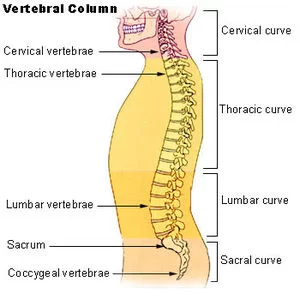
- The cervical: There are 7 cervical vertebrae
- The thoracic: 12 thoracic vertebrae
- The lumbar spine: 5 lumbar vertebrae.
(Below the lumbar spine is a bone called the sacrum, which is part of the pelvis).
Each section is made up of individual bones, called vertebrae.
The normal spine has an S-shaped curve when viewed from the side. This shape allows for an even distribution of weight and flexibility of movement. The spine curves in the following ways :
The cervical spine curves slightly inward, sometimes described as a backward C-shape or lordotic curve.
The thoracic spine curves outward, forming a regular C-shape with the opening at the front—or a kyphotic curve.
The lumbar spine curves inward and, like the cervical spine, has a lordotic or backward C-shape.
The curves of the spine can be exaggerated in any plane, leading to pain, deformity, and neurologic dysfunction. Some abnormal curves are asymptomatic while others require treatment.
Common Postural-Spinal Deviation is Kyphosis, Scoliosis, Lordosis, Flat Back.
What are the types of Lordosis?
Lordosis in the lower back:

- Lordosis in the lower back, or lumbar spine, is the most common type. The easiest way to check for this condition is to lie on your back on a flat surface. You should be able to slide your hand under your lower back, with little space to spare.
- Someone with lordosis will have extra space between their back and the surface. If they have an extreme curve, there’ll be a visible C-like arch when they stand. And from the side view, their abdomen and buttocks will stick out.
Cervical lordosis
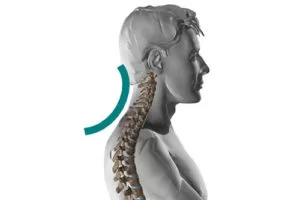
In a healthy spine, the neck shape is wide C, with the curve pointing toward the back of your neck. Cervical lordosis is when your spine in the neck region doesn’t curve as it normally should.
This can mean:
There’s too much of a curve.
The curve is running in the wrong direction, also called reverse cervical lordosis.
The curve has moved to the right.
The curve has moved to the left.
There are 5 main types of lordosis according to the Causes:
Postural Lordosis
This usually arises from being overweight and having weak abdominal and back muscles. The back is pulled forward when a person bears too much weight in the front (around the stomach). When the muscles in the back and stomach are not strong enough to maintain the spine, the spine curves forward due to the pull of the weight.
Congenital Lordosis
This kind of lordosis develops improperly throughout the formation of the spine and appears at birth. There are several causes for it, including spina bifida and achondroplasia.
Post-surgical lordosis
During a laminectomy, portions of the vertebrae (spinal bones) are cut away to provide access to the spinal cord or nerve roots. This can make the spine unstable and enhance the natural curvature to an abnormally curved posture when done over numerous levels of the spine. Adults rarely experience this issue, which more frequently affects kids with spinal cord tumours after the tumour has been surgically removed.
Neuromuscular Lordosis
A neurological disease that affects the muscles that support the spine is what leads to this kind of lordosis. Neuromuscular lordosis can be caused by diseases including cerebral palsy and muscular dystrophy.
Lordosis secondary to hip flexion contracture
This particular group of individuals has contracture of the hip joints, which pushes the spine out of alignment. This contracture may result from a number of conditions, such as an infection, an accident, or problems with the balance of the muscles.
Causes of Lordosis
It’s also called lower cross syndrome. In which muscles surrounding the hip and the spine become tense or weak.
» Achondroplasia – bones do not grow normally, leading to the short stature.
» Spondylolisthesis – the vertebrae in the lower back slip forward.
» Osteoporosis – vertebra become fragile and can easily be broken.
» Obesity – can cause lordosis.
» Kyphosis – can lead to gradual lordosis
» Discitis – the inflammation of the intervertebral disc
» Benign juvenile lordosis
» Tight lower back muscles
» Excessive visceral fat
» Pregnancy
» Rickets.
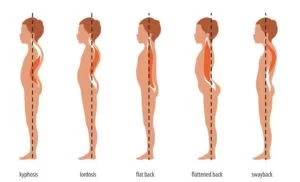
Symptoms
C-shape back when seen from a lateral aspect, with the buttocks being more prominent
A large gap between the lower back and the floor when lying on one’s back
Pain and discomfort in the lower back
Problems in moving in certain ways.
Lumbar hyperlordosis (anterior pelvis tilt) has an impact on the height of individuals suffering from this medical issue, a height loss of 0.5-2.5 inches is common.
Hyper-lordosis worse’s symptoms: These are :
- Tingling numbness
- electric shock pains
- weak bladder bowel control
- weakness in the lower limb
- difficulty maintaining muscle control
Diagnosis
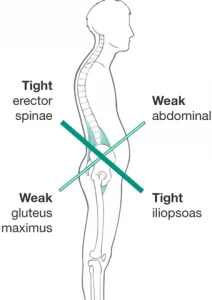
EXAMINATION:
Physical examination:
» Palpation determines a spinal abnormality by feel.
» Rang of Motion measures the degree of movement of flexion, extension, lateral bending, and spinal rotation.
Neurological Evaluation:
» Assessment of symptoms- pain, numbness, paresthesias, extremity sedation and motor function, muscle spasm, weakness, and bowel/bladder changes.
Radiographic:
» Spine AP, PA, and lateral view of the spine X-ray taken.
» Cobb’s angel measure degree of the lordosis in AP view of X-ray.
Treatment of Lordosis
Non-surgical treatment:
» Medication- NSIADS And Analgesics.
» Physiotherapy- spine strength and flexibility exercise and increase Range Of Motion.
» Braces- control the curve progression.
» Reduced body weight.
» Back Flexion Muscle Exercise for Lumbar Lordosis.
» Neck Extensor Muscle Strengthening Exercise for Cervical lordosis.
Physiotherapy exercise:
» Anterior-Posterior tilting
» Modified Ball Bridging
» Gluteal stretching
» Cat and Camel
» Hamstring stretching
» Knee to chest
» Trunk Rotation
» Abdominal crunch.
Exercises for persons with lordosis can be developed with the assistance of a healthcare practitioner. A physical therapist or trainer who specializes in treating these issues may be suggested by a doctor.
Exercises that are beneficial for those who have an abnormal spine curvature. The exercises listed below can assist with lordosis:
Hip flexor stretches
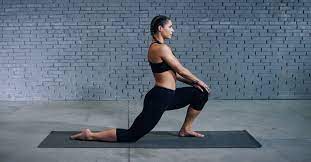
- Start from a kneeling posture on a soft surface, such as a yoga mat, to execute a hip flexor stretch.
- With the right knee immediately over the right foot, position the right foot in front of the torso such that the knee bends at a 90-degree angle.
- Keep the pelvis and spine steady and neutral while pulling the shoulders back and down without arching the back.
- Keep the left leg on the ground and tilt the pelvis forward as you lean forward into the right hip.
- Repeat 2–5 times for each hip, holding the stretch for 30–45 seconds each time.
- To intensify the stretch, if it seems comfortable, lean more into the hip.
Cat-Cow Pose
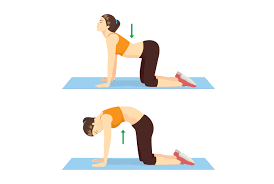
- Start on your hands and knees on the ground or on a yoga mat to do the Cat-Cow yoga stance.
- Kneel with the toes tucked, knees hip-width apart, and exactly beneath the hips.
- Hands should be placed shoulder-width apart, precisely below the shoulders, and looking forward.
- To get the spine into a neutral posture, move the abdominal muscles.
- Exhale, slowly arch your back forward while letting your head hang down.
- Hold for 10 to 15 seconds.
- Draw the shoulder blades down the back while inhaling and maintain the position for 10 to 15 seconds.
- Bring the spine back to its neutral state.
Pelvic tilt exercises
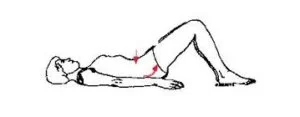
- Keep your knees bent at 90 degrees while your feet are flat on the floor, and lie on your back.
- Tilt your pelvis backward to flatten your lower back on the floor.
- Hold for a few seconds, then relax.
- Repeat 10-15 times.
Bird dog
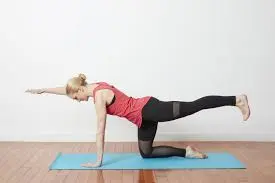
- Put your knees under your hips and your wrists beneath your shoulders as you go down on your hands and knees.
- Extend your right arm forward and your left leg back, keeping your back flat.
- Hold for a few seconds
- Return to the beginning position.
- Repeat with the opposite arm and leg.
- Do 10-15 repetitions on each side.
Plank
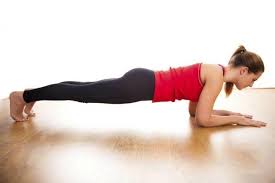
- Your forearms should be on the ground when you begin in the push-up posture.
- From your head to your toes, maintain your body in a straight line.
- Hold for as long as you can.
Dead bug
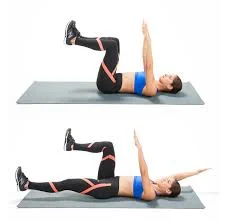
- As you lay on your back, your arms and legs should be extended straight up in the air.
- While maintaining your back firmly planted on the mat, slowly drop your right arm and left leg towards the ground.
- After a little pause, go back to the beginning position.
- Similarly, move the opposite arm and leg.
- Do 10 to 15 repetitions on each side.
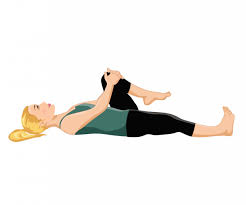
Knee to chest stretch
- With your legs bent, lie on your back.
- One knee should be brought to the chest and held there for a short time.
- Switch legs and repeat.
- Hold each stretch for 30 seconds.
Hamstring stretch
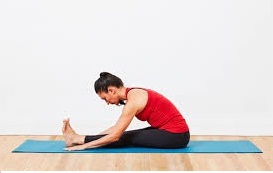
- Sit on the ground (Long sitting position) your legs straight out in front of you.
- Keeping your back straight, extend your hand towards your toes.
- Hold for 30 seconds.
Preventive Measure (Care of Spine ):
There are no exact criteria but a few steps help to strengthen spinal muscle and overall functionality of the spine :
- Regular Back Flexion Exercise.
- Stretching And Range of motion exercises to avoid stiffness and tightness.
- shoulder shrugging exercise
- Neck Active movements
- Regular Yoga Position
- Straight leg raises (SLR)
- pelvic tilt on an Exercise ball.
- Good Diet
When to consult a doctor for lordosis?
You do not require therapy if the lordotic curve corrects itself as you bend forward (the curve is flexible).
However, you should seek therapy if you stoop over and the lordotic curve is still there (the curve is not flexible).
If the pain is preventing you from performing the tasks you have every day, you should also get help. The spine’s health greatly affects our flexibility, movement, and daily activities. Options for treating the excessive curvature will be available from your doctor. By taking care of lordosis today, one might avoid problems later in life like arthritis and chronic back pain.
Prognosis
Most children and people with lordosis have full, active lives with early discovery, thorough monitoring, and appropriate treatment.
Your life shouldn’t be significantly affected by lordosis. Most individuals do require Physical therapy and Exercise for it. Even if you do, posture correction will probably simply require over-the-counter drugs or simple exercises.
Children with lordosis often overcome it as their spines expand along with the rest of their bodies.
Conclusion
An excessively inward bend of the spine, often in the neck or lower back, is referred to as lordosis. Congenital diseases, poor posture, and traumas are a few of the causes and risk factors.
In addition to imaging studies, a clinician can frequently detect lordosis with a physical examination.
A person with minor lordosis often doesn’t require treatment, but if the curve hurts, they can benefit from physical therapy or over-the-counter drugs. Surgery can be needed for severe lordosis.
FAQs
What causes lordosis?
An excessively inward bend of the spine, often in the neck or lower back, is referred to as lordosis. Congenital diseases, poor posture, and traumas are a few of the causes and risk factors. In addition to imaging studies, a clinician can frequently detect lordosis with a physical examination.
Does lordosis cause problems?
Pain from lordosis can occasionally make it difficult to move. Usually, the lower back is where it is located. People of any age can develop lordosis. The issue may be treated conservatively with medication, physical therapy, braces, and weight loss.
What is the difference between kyphosis and lordosis?
When the lower back bends inward too far above the buttocks, a condition called lordosis (sometimes called swayback), the child’s belly protrudes and their buttocks stick out. When the upper spine bends too far outward, creating a hump on the upper back, it is called kyphosis.
Is lordosis normal or abnormal?
The lumbar spine’s inward bend, located immediately above the buttocks, is called the lordosis. It’s typical to have some lordosis. Swayback is the result of excessive arcing. There are various components that make up the spine.
Can lordosis be cured?
Treatments for mild cases of lordosis may be minimal or nonexistent. Problems can occasionally be outgrown by kids. These procedures could assist in reversing, fixing, or correcting lumbar lordosis.
Is lordosis a birth defect?
Spinal abnormality is known as lordosis. It occurs when the lower back’s spine bones flex inward more than they should. A newborn can have lordosis. or they can get it as a result of another health issue.
References
- Lordosis. (n.d.). https://www.nationwidechildrens.org/conditions/lordosis
- Gabbey, A. E. (2023, April 24). What Causes Lordosis? Healthline. https://www.healthline.com/health/lordosis#types


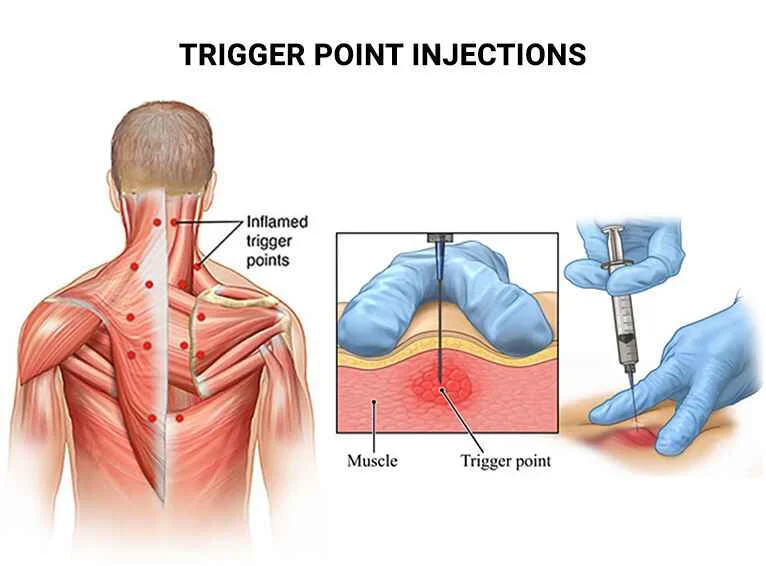

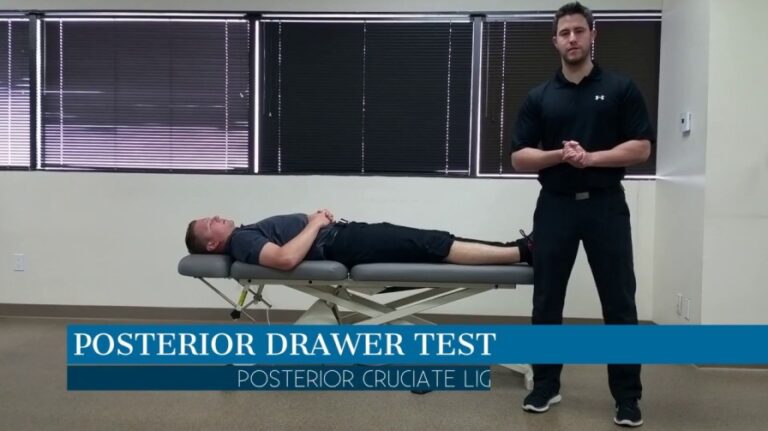
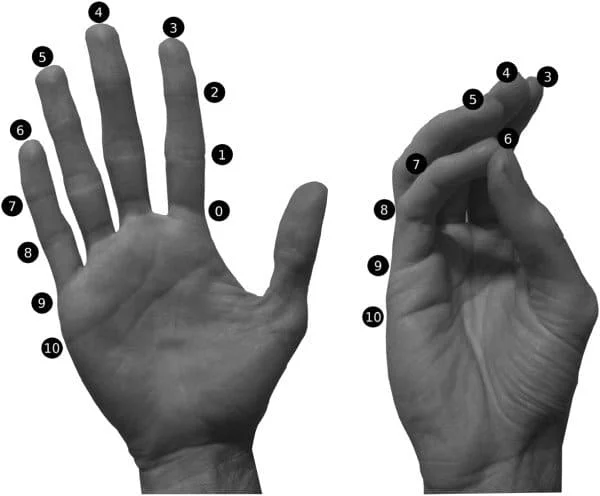
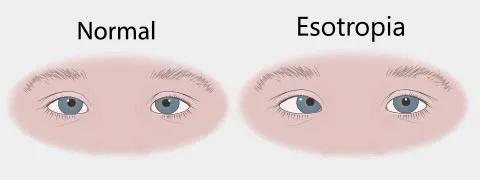
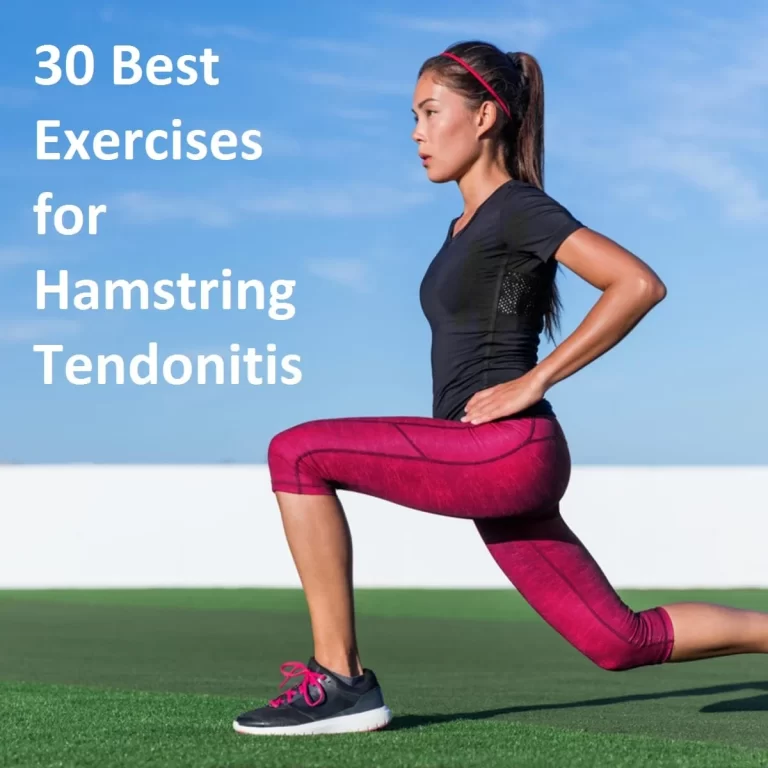
12 Comments